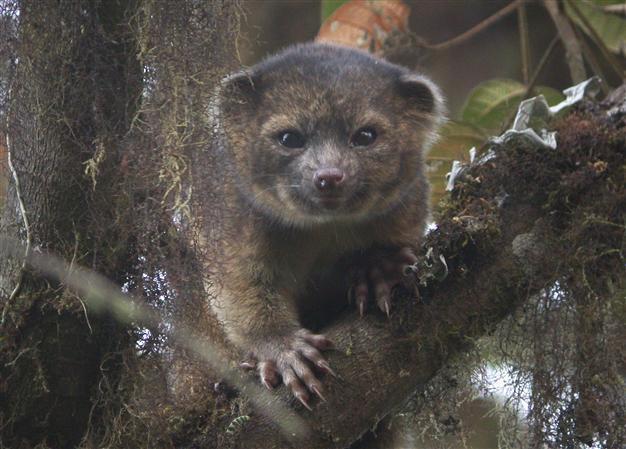Introducing the olinguito, the newest mammal discovery
WASHINGTON - Reuters

An "olinguito (Bassaricyon neblina)," described as the first carnivore species to be discovered in the American continents in 35 years, is pictured in a cloud forest in South America, in this July 18, 2013 photograph released on August 15, 2013. REUTERS/Mark Gurney/Smithsonian Institution/Handout via Reuters
The long-tailed, orange-furred, big-eyed olinguito - said to resemble a cross between a house cat and a teddy bear - is the newest mammal and the first carnivore discovered in the Americas in 35 years, the Smithsonian Institution announced on Thursday.
Native to the high, misty cloud forests of Colombia and Ecuador, the olinguito is the smallest member of the raccoon family, according to Kristofer Helgen, a Smithsonian scientist who recognized it as a distinct species 10 years ago.
The "aha" moment occurred not in a South American forest but at Chicago's Field Museum, the creature's discoverer, Helgen said at a news briefing.
"I pulled out a drawer ... and said 'Wow,'" Helgen recalled of his first view of a long-dead 20th century specimen, which had been identified as a related species, the olingo. "It was like nothing I'd ever seen before."
Helgen said the teeth and skull of the specimen were much different from those of an olingo, which is larger and has more prominent ears than the olinguito.
He said he could have published this finding in a scientific journal then, but in the interest of being thorough, he sought out colleagues to confirm the existence of the new species in its natural habitat.
Olinguitos are considered carnivores, even though they eat mostly fruit, Helgen said. These creatures have teeth that look fully capable of eating meat, he added.
They have thick, woolly fur that is brighter than that of the more drab-colored Olingos. Olinguitos are about 0.76 metre long and weigh about 900 grams. Males and females are about the same size, and females raise a single baby at a time, the scientists said.
New to science, not to zoos Olinguitos are hard to spot in the cloud forests of the northern Andes, which are thickly wooded and often shrouded in fog or mist with elevations of 1,524 to 2,743 meters above sea level. Largely nocturnal, they spend most of their time in the forest canopy and are adept at jumping from tree to tree.
Helgen and his team closely observed the animal's habits and environment. Andean cloud forests are considered unique ecosystems because of the variety of species they support, but they are being deforested to make way for agriculture, urbanization and the illegal drug trade.
The team estimated that 42 percent of the olinguito's historic habitat has been converted to human use, but Helgen stressed that the new species is not highly endangered.
While the olinguito is new to science, with an official name of Bassaricyon neblina, it has been seen by humans and misidentified for decades. It was identified by genetic analysis at the National Zoo in Washington. The research was published on Thursday in the peer-reviewed journal ZooKeys.
One olinguito misclassified as an olingo even made a tour of U.S. zoos in the 1960s and 1970s, dying in 1976 at the Bronx Zoo without ever breeding.
"She wasn't being picky, it just wasn't the same species," Helgen said.
The discovery of the olinguito was part of a comprehensive study of olingos. Helgen said that in the course of this project he and his team have made what they believe to be even bigger discoveries, but it could take another decade to announce them.
